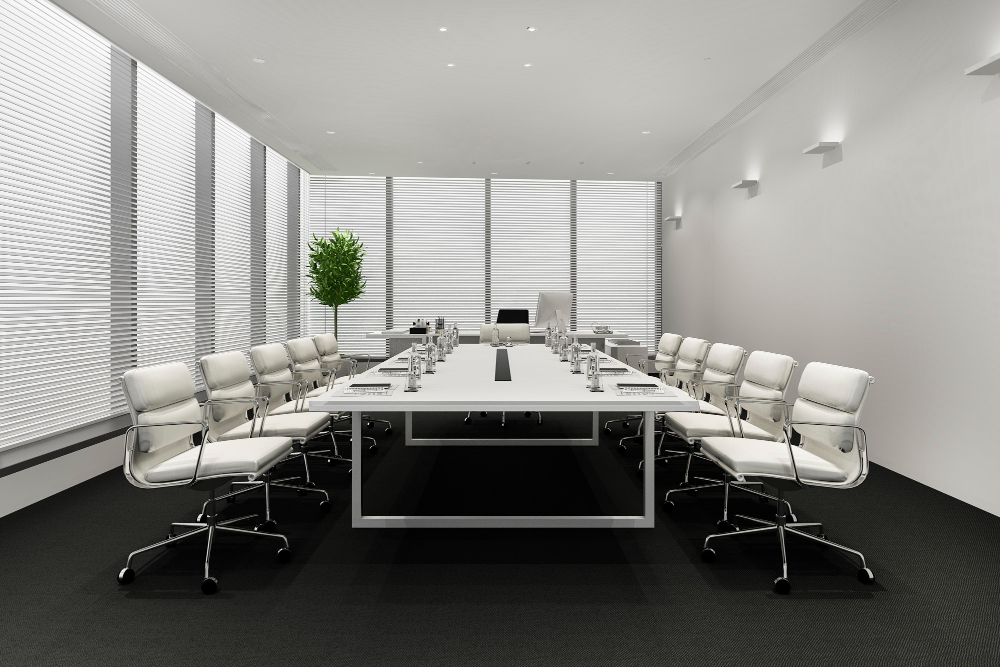
In the fast-paced world of corporate dynamics, boardrooms stand as the epicenter of strategic discussions and decision-making. The boardroom table, once a symbol of traditional elegance and formality, has undergone a remarkable transformation. Today, it is not merely a functional piece of furniture but a statement that reflects a company’s values, fosters collaboration, and embraces modernity.
The Evolution of Boardroom Aesthetics
Traditional Elegance
Traditionally, boardroom tables were synonymous with dark wood finishes, imposing structures, and a formal atmosphere. These tables often featured intricate designs, carving, and leather inlays, exuding a sense of timeless sophistication. The aesthetic aimed to convey authority and permanence, aligning with the traditional corporate image.
Modern Minimalism
In recent years, there has been a paradigm shift towards modern minimalism in office furniture design. Boardroom tables now embrace clean lines, lighter materials, and a more open layout. This shift mirrors the changing work culture, emphasizing collaboration and adaptability over rigidity. Sleek, uncluttered designs have become the hallmark of contemporary boardrooms, creating a more inviting and dynamic environment.
Integrating Technology
Smart Surfaces
One of the key features driving the trendsetting boardroom design is the integration of smart technology. Traditional tables are giving way to innovative surfaces equipped with touch controls, wireless charging stations, and audiovisual connectivity. These technological advancements not only streamline meetings but also elevate the overall functionality of the boardroom, catering to the needs of a tech-savvy workforce.
Connectivity Hubs
Boardroom tables are transforming into connectivity hubs, offering seamless integration with personal devices. USB ports, power outlets, and built-in data ports are becoming standard features, allowing employees to stay connected and productive during meetings. This tech-forward approach not only enhances efficiency but also positions the boardroom as a hub for collaboration and idea exchange.
Materials Redefined
Sustainable Choices
As the world embraces sustainability, boardroom tables are following suit. Traditional wood is being replaced with eco-friendly alternatives, such as bamboo, reclaimed wood, or recycled materials. Companies are recognizing the importance of environmentally conscious choices, and the selection of sustainable materials for boardroom tables aligns with their commitment to corporate social responsibility.
Mixed Materials
Trendsetting boardroom designs often play with a mix of materials, combining metal, glass, and wood to create visually striking tables. This eclectic approach not only adds a touch of modernity but also allows for customization based on the company’s branding and aesthetic preferences. The blend of materials reflects a commitment to versatility and adaptability in the workplace.
The Impact on Employee Experience
Collaborative Spaces
The shift from traditional to trendsetting boardroom designs is not merely about aesthetics; it’s about fostering a collaborative work culture. Open and inviting layouts encourage team members to actively participate in discussions, breaking down hierarchical barriers. Employees are more likely to engage in brainstorming sessions and creative problem-solving when the environment is conducive to collaboration.
Employee Well-being
The choice of boardroom furniture, including chairs, plays a crucial role in enhancing employee well-being. Ergonomically designed chairs, paired with trendsetting tables, contribute to a comfortable and health-conscious workspace. Integrating the best office chairs into the boardroom setup ensures that employees can focus on the meeting agenda without compromising on their physical comfort.
Conclusion
In conclusion, the transition from traditional to trendsetting boardroom table designs signifies a broader shift in office culture and aesthetics. Companies are recognizing the importance of creating inspiring and functional spaces that align with their values and support the well-being of their employees. By integrating smart technology, sustainable materials, and a modern design ethos, boardrooms are transforming into dynamic hubs where innovation and collaboration thrive. As the demand for trendsetting office furniture continues to rise, the boardroom becomes a canvas for companies to make a lasting statement about their identity and commitment to the future of work.


